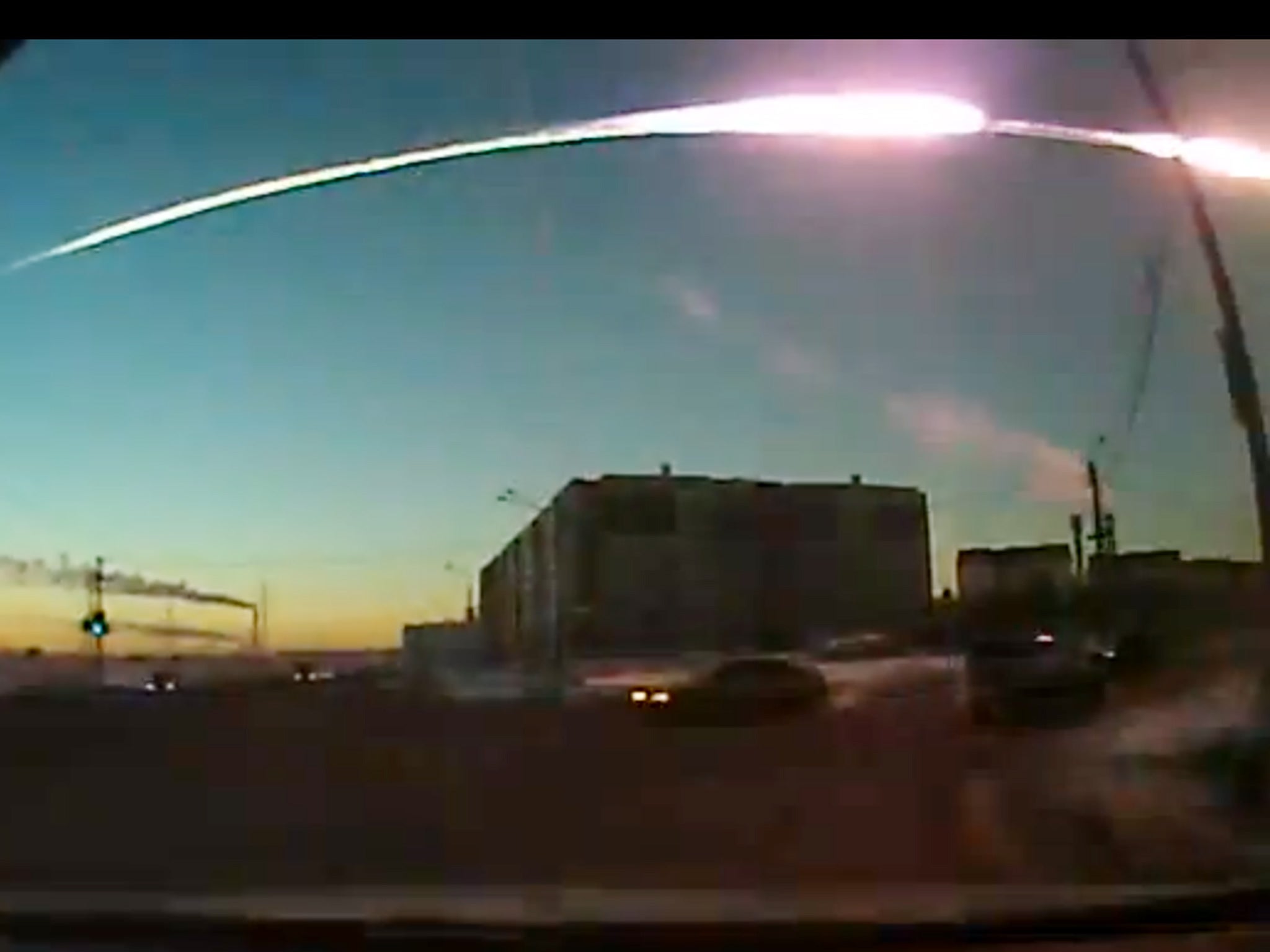A cosmic coincidence, but the Chelyabinsk meteor and 2012 DA14 are reminders of the deadly power of small asteroids
Perhaps mother nature is telling us to take this threat a little more seriously

Your support helps us to tell the story
From reproductive rights to climate change to Big Tech, The Independent is on the ground when the story is developing. Whether it's investigating the financials of Elon Musk's pro-Trump PAC or producing our latest documentary, 'The A Word', which shines a light on the American women fighting for reproductive rights, we know how important it is to parse out the facts from the messaging.
At such a critical moment in US history, we need reporters on the ground. Your donation allows us to keep sending journalists to speak to both sides of the story.
The Independent is trusted by Americans across the entire political spectrum. And unlike many other quality news outlets, we choose not to lock Americans out of our reporting and analysis with paywalls. We believe quality journalism should be available to everyone, paid for by those who can afford it.
Your support makes all the difference.The small asteroid that entered the Earth’s atmosphere over Chelyabinsk today took everyone by surprise; the fact that such an event occurs is not.
The Earth is continually bombarded by rocks and debris from elsewhere in the Solar system. Luckily we have a thick atmosphere protecting us on the surface, as the normal collision speed is around 35,000 miles per hour. When something the size of a sand grain enters out atmosphere, it burns up in a flash of light that we call a meteor or shooting star, 60 miles above our heads. There are so many of them they can be seen on any dark cloudless night.
The anonymous chunk of rock that hit us today was much larger – possibly a few metres across – and was big enough to punch its way to a much lower altitude in a spectacular fashion. Small asteroids this size almost never make it to the ground in one piece, as the increasing air pressure at lower altitudes acts effectively like a brick wall, breaking the rock apart. This releases the energy in a catastrophic fireball, leaving only a few small pieces to fall to the ground as meteorites, but with a tremendous shockwave that those near the impact point experienced first hand.
Much of the research in the 1980’s and 1990’s into the risk from asteroid impact concentrated on finding the asteroids 1 km or more across, as an strike from one of those can cause global devastation. Thankfully most of those have been found without much worry, so in recent years astronomers have been turning to searching for the smaller objects that can still cause less damage over thousands of square miles, but hit us more frequently. We now know that something the size of the Chelyabinsk impactor enters our atmosphere somewhere between once a year and once per decade.
Yet it is sobering to realize that both the object that hit us and asteroid 2012 DA14 that is predicted to miss us this evening, were small enough that astronomers cannot hope to find more than a small fraction of them.
2012DA14 could destroy a region the size of a small city if it ever hits us, but we have discovered only a minority of those 10 times larger. Hopefully there will be no lasting physical injuries from todays unannounced visit, and there will certainly be no long term effects to the impact region (apart from possibly an increase in tourism).
However a small asteroid strike and flyby within 24 hours may have been cosmic coincidence, or perhaps mother nature is telling us to take this threat a little more seriously.
Professor Alan Fitzsimmons is Astronomer at Queen's University Belfast, currently working on the Pan-STARRS project in Hawai'i, searching for Near-Earth Asteroids.
Join our commenting forum
Join thought-provoking conversations, follow other Independent readers and see their replies
Comments